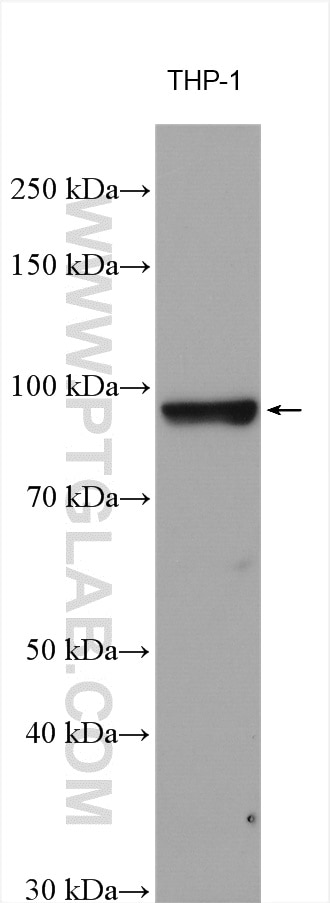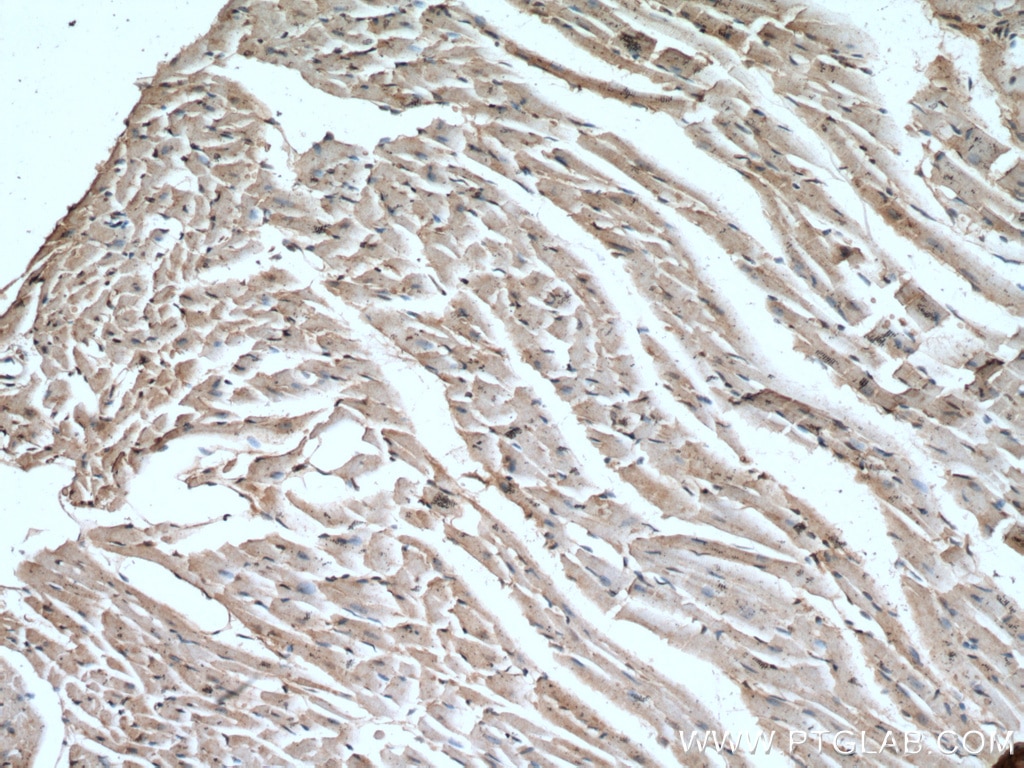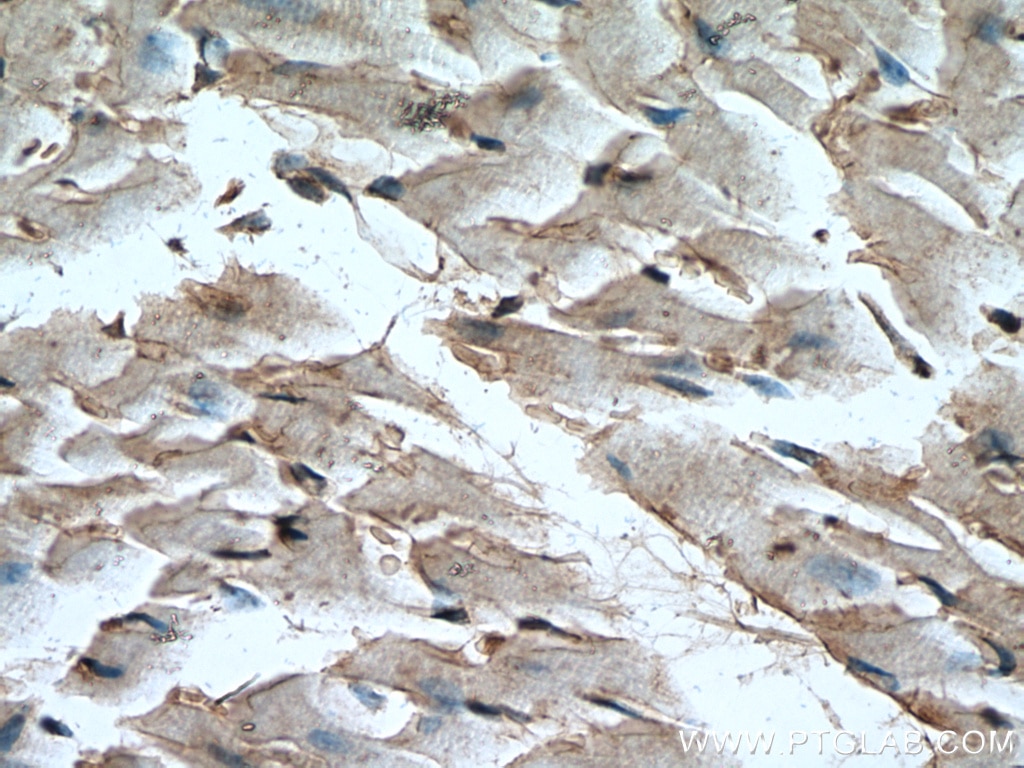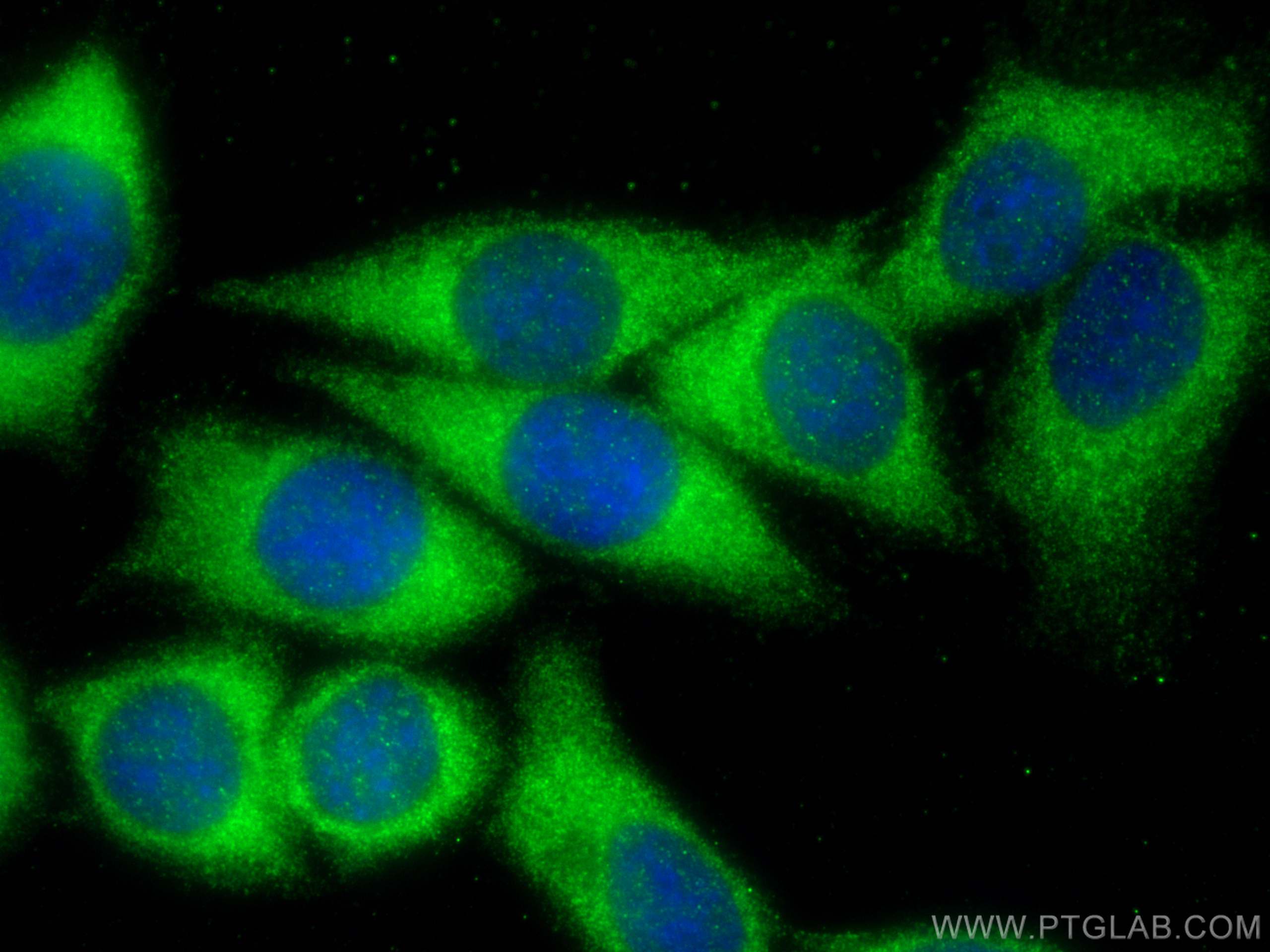Validation Data Gallery
Tested Applications
| Positive WB detected in | THP-1 cells |
| Positive IHC detected in | mouse heart tissue Note: suggested antigen retrieval with TE buffer pH 9.0; (*) Alternatively, antigen retrieval may be performed with citrate buffer pH 6.0 |
| Positive IF/ICC detected in | HepG2 cells |
Recommended dilution
| Application | Dilution |
|---|---|
| Western Blot (WB) | WB : 1:500-1:2000 |
| Immunohistochemistry (IHC) | IHC : 1:50-1:500 |
| Immunofluorescence (IF)/ICC | IF/ICC : 1:50-1:500 |
| It is recommended that this reagent should be titrated in each testing system to obtain optimal results. | |
| Sample-dependent, Check data in validation data gallery. | |
Published Applications
| WB | See 6 publications below |
| IF | See 2 publications below |
Product Information
21601-1-AP targets LRRC8C in WB, IHC, IF/ICC, ELISA applications and shows reactivity with human, mouse, rat samples.
| Tested Reactivity | human, mouse, rat |
| Cited Reactivity | human, mouse, rat |
| Host / Isotype | Rabbit / IgG |
| Class | Polyclonal |
| Type | Antibody |
| Immunogen | LRRC8C fusion protein Ag16213 相同性解析による交差性が予測される生物種 |
| Full Name | leucine rich repeat containing 8 family, member C |
| Calculated molecular weight | 803 aa, 92 kDa |
| Observed molecular weight | 92 kDa |
| GenBank accession number | BC113973 |
| Gene Symbol | LRRC8C |
| Gene ID (NCBI) | 84230 |
| RRID | AB_10733648 |
| Conjugate | Unconjugated |
| Form | Liquid |
| Purification Method | Antigen affinity purification |
| UNIPROT ID | Q8TDW0 |
| Storage Buffer | PBS with 0.02% sodium azide and 50% glycerol{{ptg:BufferTemp}}7.3 |
| Storage Conditions | Store at -20°C. Stable for one year after shipment. Aliquoting is unnecessary for -20oC storage. |
Background Information
LRRC8C (Leucine-rich repeat-containing protein 8C), also known as AD158, is a non-essential component of the volume-regulated anion channel (VRAC, also known as VSOAC channel), which is required to maintain a constant cell volume in response to extracellular or intracellular permeability changes. The VRAC channel conducts iodide better than chloride and can also conduct organic osmolytes like taurine. The VRAC channel also mediates transport of immunoreactive cyclic dinucleotide GMP-AMP (2'-3'-cGAMP), an immune messenger produced in response to DNA virus in the cytosol (PMID:24790029; 26824658; 28193731).
Protocols
| Product Specific Protocols | |
|---|---|
| WB protocol for LRRC8C antibody 21601-1-AP | Download protocol |
| IHC protocol for LRRC8C antibody 21601-1-AP | Download protocol |
| IF protocol for LRRC8C antibody 21601-1-AP | Download protocol |
| Standard Protocols | |
|---|---|
| Click here to view our Standard Protocols |
Publications
| Species | Application | Title |
|---|---|---|
Nat Commun TET2-mediated tumor cGAS triggers endothelial STING activation to regulate vasculature remodeling and anti-tumor immunity in liver cancer | ||
Diabetes Metab J Single-Cell Landscape and a Macrophage Subset Enhancing Brown Adipocyte Function in Diabetes | ||
bioRxiv LRRC8 complexes are adenosine nucleotide release channels regulating platelet activation and arterial thrombosis | ||
bioRxiv Lysosomal LRRC8 complex regulates lysosomal pH, morphology and systemic glucose metabolism | ||
Sci Adv 2'3'-cGAMP interactome identifies 2'3'-cGAMP/Rab18/FosB signaling in cell migration control independent of innate immunity | ||
Sci Adv Regulation of volume-regulated anion channels alters sensitivity to platinum chemotherapy |



